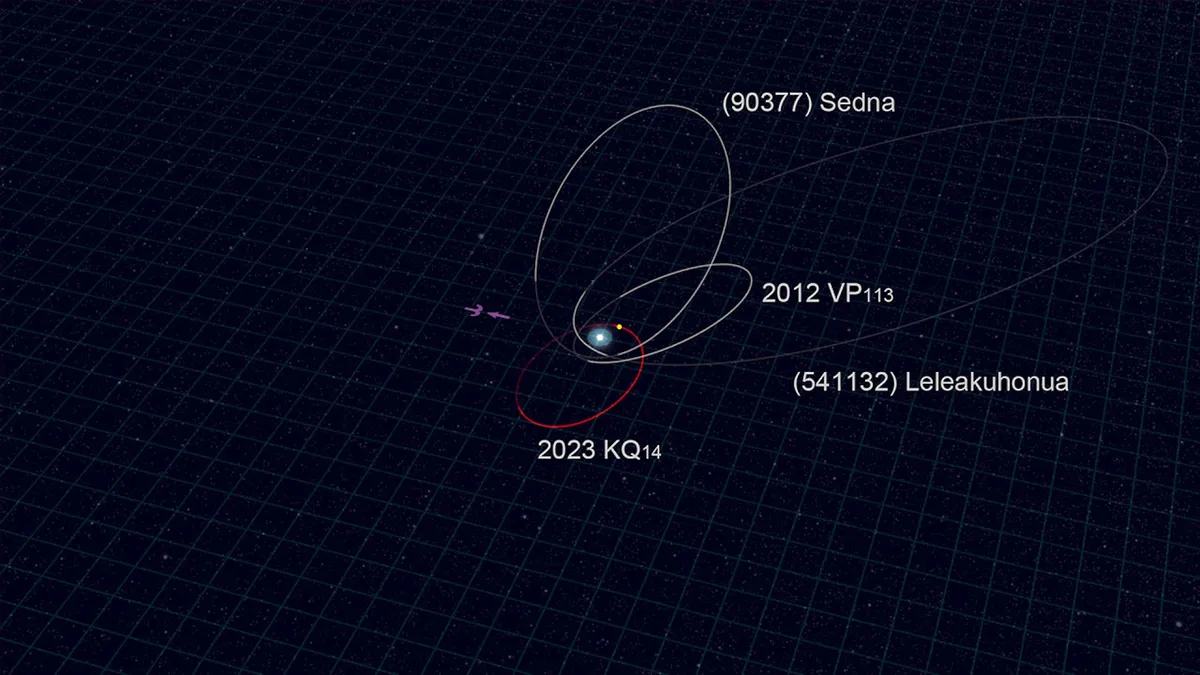
Astronomers have made a groundbreaking discovery of a possible new dwarf planet orbiting far beyond Pluto. This celestial body, officially designated as 2023 KQ14, was first detected in March 2023 by the renowned Subaru Telescope located in Hawaii. The object has been affectionately nicknamed Ammonite, drawing inspiration from the fossil of a long-extinct cephalopod. The discovery presents intriguing implications for the Planet Nine hypothesis, which posits the existence of an undiscovered ninth planet in our solar system.
Led by a team of researchers in Japan, the announcement of Ammonite's discovery was published in a paper on July 14 in the prestigious journal Nature Astronomy. This new dwarf planet was identified as part of the survey project titled Formation of the Outer Solar System: An Icy Legacy (FOSSIL). Ammonite is classified as a sednoid, a term used for celestial objects that reside beyond Neptune, the outermost confirmed planet in our solar system, and exhibit peculiar orbits. With this latest finding, Ammonite becomes the fourth known sednoid.
The term sednoid is derived from the dwarf planet Sedna, which was discovered in 2004 and resides at the edge of our solar system. Astronomers describe the orbits of celestial bodies using astronomical units (AU), where 1 AU is the distance from the Earth to the Sun. Sedna, for instance, follows an elliptical orbit that brings it as close as 76 AU from the Sun at its perihelion and extends out to 900 AU at its aphelion. In contrast, Ammonite's orbit ranges between 66 AU and 252 AU from the Sun.
The discovery of 2023 KQ14 raises questions about the validity of the Planet Nine hypothesis. Proposed in 2016, this theory suggests there may be a Neptune-sized planet orbiting the Sun at a distance of 20 to 30 times farther than Neptune itself. This hypothesized planet is believed to influence the eccentric orbits of smaller bodies within the Kuiper Belt, a vast region of icy rocks beyond Neptune. According to the study authors, the gravitational pull of a massive body, such as a planet, may be responsible for shepherding these smaller objects.
Ammonite's unique orbit complicates the Planet Nine hypothesis. Unlike the other three known sednoids, which have orbits clustered on one side of the solar system, Ammonite's path is oriented in the opposite direction. Its farthest point from the Sun diverges from the furthest points of the other sednoids, leading study co-author Shiang-Yu Wang, a research fellow at the Institute of Astronomy and Astrophysics in Taiwan, to suggest that this discovery diminishes the likelihood of a large, undiscovered planet existing in our solar system.
Further supporting this view, study co-author Yukun Huang, a project research fellow at the National Astronomical Observatory of Japan's Center for Computational Astrophysics, stated that Ammonite's orbit does not align with those of the other sednoids, thereby lowering the probability of the Planet Nine hypothesis being accurate. Some astronomers propose that a planet may have once existed within our solar system but was ejected, resulting in the unusual orbital patterns we observe today.
As the debate surrounding the Planet Nine hypothesis continues, astronomers like David Jewitt from the University of California, Los Angeles, and Christopher Impey from the University of Arizona emphasize that Ammonite’s orbit further weakens the case for Planet Nine. They note that the evidence for the alignment of known sednoids has not significantly strengthened over the past decade. The discovery of Ammonite represents a pivotal moment in our understanding of the solar system, as it opens new avenues for exploration and inquiry into the distant reaches of our celestial neighborhood.